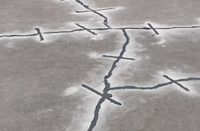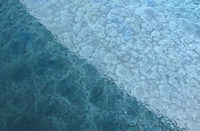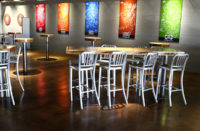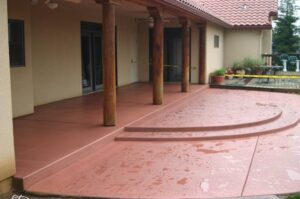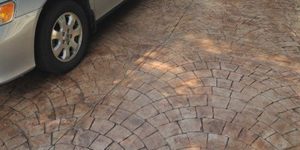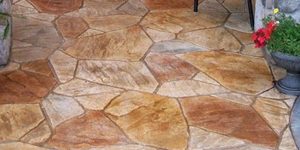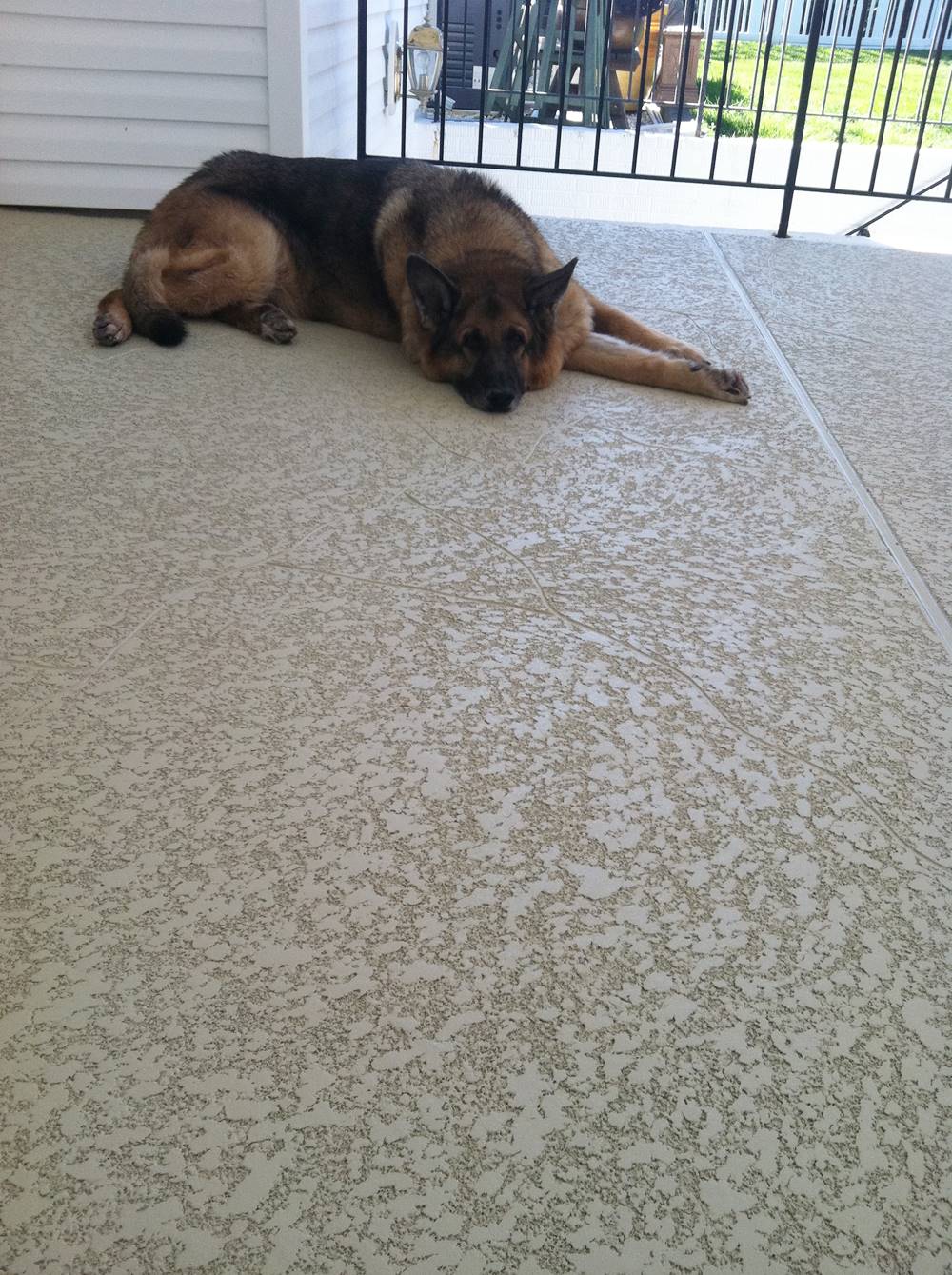
Looking for a cool idea for the pool deck or backyard patio? A knockdown finishes for concrete will fit the bill, say experienced professionals.
A knockdown finish on horizontal concrete is not dissimilar to the knockdown finishes common on drywall. It involves a cementitious material that is dispensed by hopper gun, applied with spatter brush, or in some cases screeded, troweled and textured with rollers or stamping tools. The textured material is “knocked down” with a trowel shortly after application. This is done when the material is partially but not totally dry, to level the high points. Doing this produces a more uniform, less-rough surface that is comfortable to the bare foot while also providing resistance to slip.
Using the knockdown method to apply an overlay gives visual appeal to otherwise gray or aged concrete by adding color and texture.
What’s more, knockdown veterans say the finish makes the surface cooler on hot summer days.
“By using a texture that imparts peaks and valleys, you can lessen the surface area that the bare foot comes in contact with,” said Todd Fisher, of family-owned Unique Concrete NJ, located in West Milford, N.J. “The valleys then act as a cooler zone filled with air, leaving only the peaks for the foot to come in contact with.”

Proper preparation
Though knockdown finishes are relatively uncomplicated in design and installation, expert practitioners of the knockdown art emphasize the importance of proper practices and techniques to ensure the finish meets target durability and performance parameters.
“The most important things are preparation and accurate measuring of the product,” says Dick Krach, CEO of Sundek of Washington, a decorative concrete contractor based in Chantilly, Va.
Important preparation procedures include inspection to determine if the surface is clean and free of existing coatings or sealers. Consider whether a hard-troweled surface should be ground or scarified to open up the concrete to ensure the overlay will penetrate and adhere. Also, you should maske adjacent areas for protection from overspray.
Krach said a typical system installed by Sundek includes a polymeric coating-type material. You apply this system as a bonding agent or primer, a base coat of the cementitious product — often a polymer-modified material, and a finish coat using the same cementitious material but applied with a hopper gun that dispenses globules over most, but not all, of the surface. You can apply protective sealers, based on acrylic, polyurethane or other chemistries to the finished knockdown surface.
Supplying cementitious material
The cementitious mixture arrives as a dry material in bags and mixed with water on-site. The mixture is a combination of portland cement, sand, other specialized additives, and a polymer that acts as a binding agent — the glue, says Krach.
Not all such mixtures contain the polymer component. Fisher, of Unique Concrete, says his company applies cementitious materials that are not polymer-modified. Instead, the mix contains a colloidal silica admixture that he says reduces the potential for efflorescence. It also enhances strength and density and decreases concrete shrinkage. On the job site, the company adds the liquid colloidal silica to the mix water. They then complete the cementitious mixture with cement, sand, integral color, and PVA (polyvinyl acetate) fiber for added strength and shrinkage reduction.
Tips and techniques
Unique Concrete of NJ takes a different tack with its knockdown finishes than many contractors, Fisher says, as it does not employ a hopper gun to dispense the finish material. Rather, Unique Concrete’s typical approach is to pour, screed and trowel the overlay in a conventional way. They then use specially designed rollers to create texture ridges that you can knock down with the troweling methods.
“To give variation and uniqueness you can knock it down in different ways,” Fisher says.
The creation of texture using the rollers does not vary greatly on Unique Concrete jobs. “What does change is the timing of when you knock down the finish. You can adjust that. For example, doing it sooner when the mixture is softer will make the surface more suited for a project where barefoot traffic will be common, while still providing traction due to having peaks and valleys.”
By contrast, for a project on a driveway, knockdown troweling is done later, when the placed mixture is more set up. Thus, removing less material from areas of raised texture leaves behind more relief and more grip.
Also, you can use different troweling methods to give variety to the texture, Fisher says. These techniques include moving the trowel in different directions rather than just left to right. You can also use an S-type curving motion to produce “movement.” Doing this creates a variegated texture rather than a consistent or repetitive knockdown.
Knockdown does not inherently give the concrete a widely variegated texture. “We try to move the trowel in different directions to create more variation,” Fisher says.
Basic guidelines
Tom Ralston is the owner of Tom Ralston Concrete, in Santa Cruz, Calif. He calls knockdown finishes a “bulletproof” decorative option for pool decks. He implies that is relatively difficult to get wrong if you follow a few basic guidelines.
- Make sure the mixing ratios are accurate, as too much water will weaken the mix design.
- Move quickly when applying the product, to ensure consistency.
- Don’t apply if the surface is too hot or too cold. Air temperatures between 60 F and 70 F are optimal.
- Ensure all tools are in good working order before starting. This includes clean mixing buckets, the mixing drill apparatus, and the hopper gun, hose, compressor and trowels. “If all is not in order, issues will arise,” he says.
Ralston says slip resistance is a key selling point for knockdown finishes, in particular for commercial applications. The ability to renew aged or plain gray concrete with color and visual appeal are also important marketing attributes.
Adds Sundek’s Krach: “That’s really what we’re selling. We say we beautify ugly concrete.”
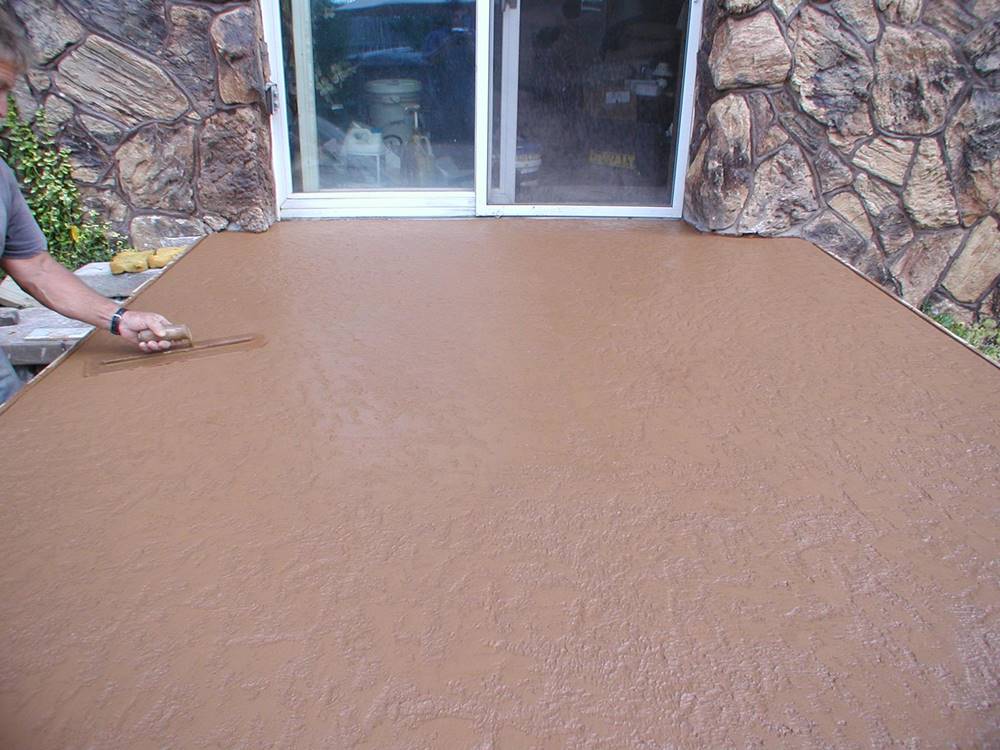
Questions from Readers
Question
I have a knockdown patio that looks like the top photo with the dog laying on it. It has become stained from potted plants. So, I would like a recommendation for a product to coat our patio so it looks like that patio. I pressure washed the patio yesterday and it is clean. However, process did not remove the stains.
Answer from Concrete Decor
Glad to hear that your patio has already been power washed and is clean of any dirt, grease etc.
Here is the product we would recommend for recoating your knock-down finish on the patio. The product should cover those stains from planters in one-coat. However, if you need a second coat, apply more after the first coat has dried. This product is very easy to work with and is offered in solvent- or water-based formulations. There are also numerous colors to choose from.
SureCrete ColorTec Pigmented Sealer SB
SureCrete ColorTec Pigmented Sealer WB
